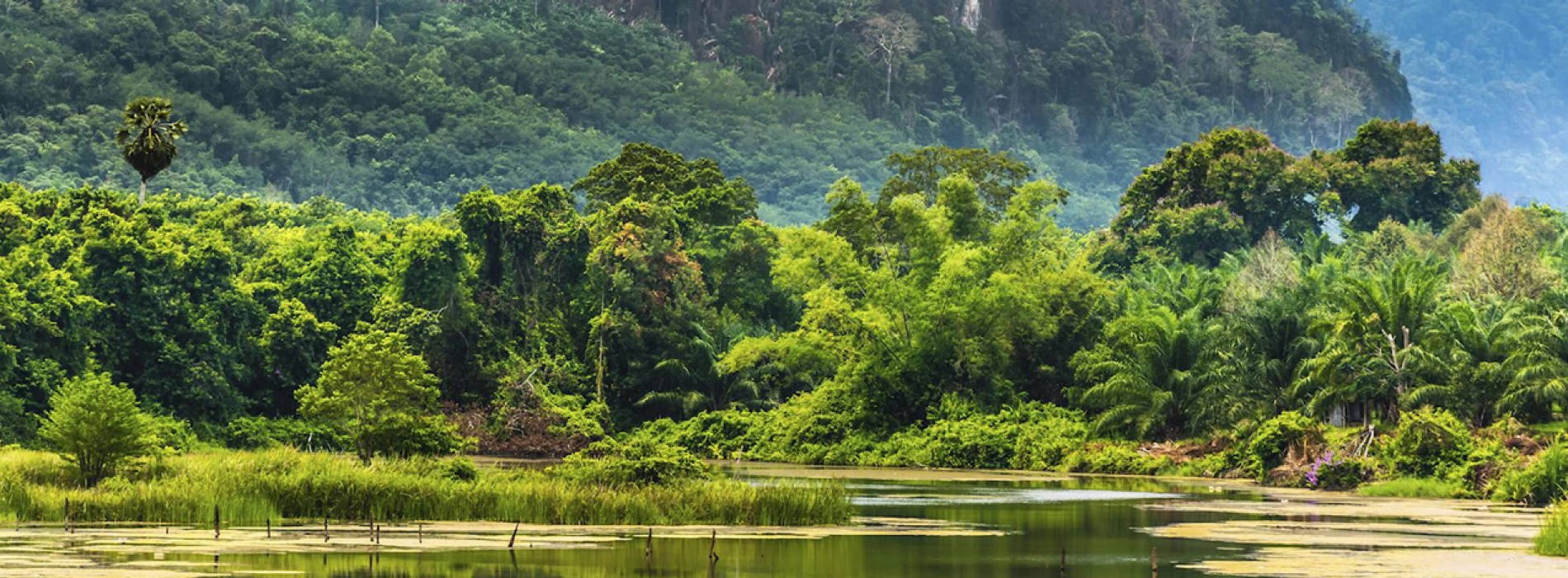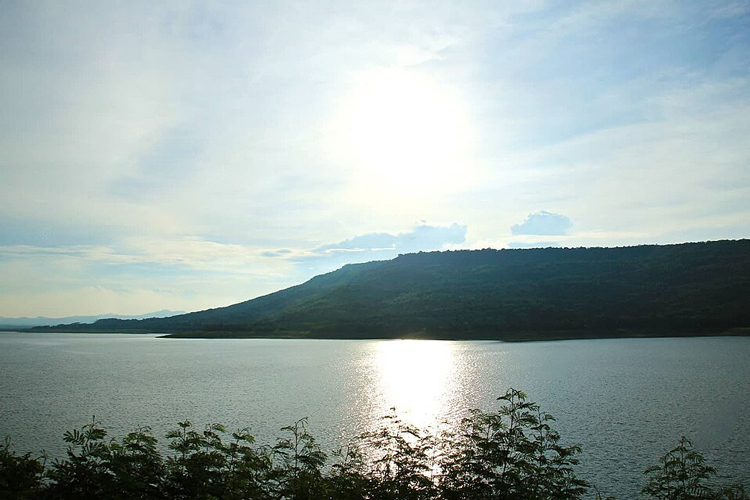Khao Yai

Located around 120 miles northeast of Bangkok, Khao Yai is a well-known area in Thailand, centered around its well-known national park. Khao Yai National Park is the first national park in Thailand, having been created in 1962. At 2,168 square kilometers, it is the third biggest national park in the nation. The park is renowned for its abundant biodiversity and serves as a home to a wide variety of species due to its varied settings. There are pathways leading to interesting overlooks, and visitors may participate in a variety of activities including hiking, animal safaris, and camping. Beyond its allure for tourists, Khao Yai is important for conservation efforts because of its emphasis on protecting its species and diversified ecosystems. All things considered, Khao Yai provides a diverse experience that appeals to adventurers, nature lovers, and people looking to escape to Thailand's natural beauties.

The incorporation of gardens and outdoor sculptures
The history of Khao Yai is a fascinating narrative of conservation efforts, natural evolution, and how human activity interacts with the region's diverse biological and cultural heritage. Since its creation as Thailand's first national park in 1962, Khao Yai National Park has protected a wide variety of plants and animals, including several that are endangered. In addition to its biological value, the location probably contains evidence of past human occupancy, as indigenous groups have lived there for many centuries. Khao Yai has developed into a popular tourist destination throughout time, attracting recognition for its breathtaking scenery and acting as the setting for critically acclaimed movies such as "The Beach."Because of the park's prominence, tourism infrastructure has grown, which has boosted the economy but also raised questions about sustainability and environmental effects. In addition, a growing wine business has emerged in recent years, which has increased the appeal of Khao Yai. Khao Yai has managed to strike a careful balance between conservation needs, human involvement, and the preservation of its natural and cultural legacy throughout its history. The significance of sustainable practices and the peaceful coexistence of nature and human activity in this exceptional Thai setting are still being emphasized by ongoing initiatives.

The Khao Luk Chang Bat Cave - The hosting a large population of bats
Khao Yai experiences a tropical climate with distinct seasons.
Cool and Dry Season (November to February): This period is considered the winter season in Thailand. During these months, temperatures in Khao Yai are relatively cooler and more pleasant. Daytime temperatures range from 20 to 30 degrees Celsius. Nights can be cooler, especially in December and January.
Hot Season (March to May): The hot season sees a rise in temperatures, with daytime temperatures often exceeding 30 degrees Celsius. This is also a relatively dry period with minimal rainfall.
Rainy Season (June to October): The rainy season in Khao Yai brings higher humidity and regular rainfall. July and August tend to be the wettest months. During this period, daytime temperatures can range from 25 to 30 degrees Celsius.
It's worth noting that the national park's higher elevations may experience cooler temperatures, especially in the evenings and early mornings, even during the hotter months.
There are two distinct wet and dry seasons in Khao Yai's climate, which is similar to that of Thailand. There is a fair amount of rain from June to October. Thus, November through May of the following year is the best period for you to visit Khao Yai. The busiest travel months in Khao Yai are November through January in particular. There are also some really intriguing strawberry-picking activities because Saraburi Sunflower Field and Jim Thompson Farm will be available this season.
The perfect amount of time to spend in Khao Yai might vary according on your interests, tastes, and the things you want to do. That being said, it is recommended that visitors spend two to four days in Khao Yai.
2 Days: With a two-day itinerary, you can cover some of the main highlights of Khao Yai, such as exploring key waterfalls like Haew Narok and Haew Suwat, enjoying scenic viewpoints, and partaking in a wildlife safari. This allows for a taste of the natural beauty and biodiversity of the region.
3 Days: Extending your stay to three days provides more flexibility to explore additional trails, engage in outdoor activities like trekking or bird watching, and visit attractions like Primo Piazza or vineyards in the area. This duration allows for a more leisurely pace and a deeper immersion in the natural and cultural aspects of Khao Yai.
4 Days or more: If you have the luxury of more time, spending four or more days in Khao Yai allows for a comprehensive exploration of the national park and its surroundings. This extended stay permits you to venture into less-traveled areas, participate in various outdoor activities, and perhaps take a day to relax and enjoy the serene atmosphere.

Lam Takong Reservoir is known for its scenic views
Car or Motorbike Rental: Renting a car or motorbike provides flexibility and independence to explore Khao Yai at your own pace. This is especially convenient for reaching remote areas, vineyards, and attractions not easily accessible by public transport. Numerous rental agencies are available in Pak Chong and around Khao Yai.
Taxi and Grab: Taxis and ride-sharing services like Grab are available in the Khao Yai region. While it's a convenient option for short distances or one-way trips, it may be more expensive for full-day excursions.
Bicycle Rentals: Some accommodations and local shops offer bicycle rentals. This eco-friendly option is suitable for exploring the surroundings at a leisurely pace, and it's a great way to experience the local atmosphere.
Hot Air Balloon Rides: While not a means of conventional transportation, a hot air balloon ride provides a unique and breathtaking perspective of Khao Yai's landscapes. Balloon rides are typically arranged by specific operators and offer an unforgettable experience.
Walking and Hiking: Many attractions within Khao Yai National Park are accessible by walking or hiking. Guided tours or self-guided walks along well-marked trails allow you to explore the natural beauty on foot.
Car Rental: Renting a car provides the most flexibility for exploring neighboring provinces. Roads are generally well-maintained, and you can plan day trips to places like Saraburi, Nakhon Nayok, or Lopburi.
Taxi or Ride-Sharing Services: Taxis or ride-sharing services like Grab can be hired for day trips to neighboring provinces. While this can be more expensive than other options, it offers convenience and a private transportation experience.
Local Buses and Minivans: Public buses and minivans connect Khao Yai to neighboring provinces. You can check with the local bus station or transportation hubs for schedules and routes.
Train Travel: The nearest train station to Khao Yai is in Pak Chong. From Pak Chong, you can take a train to various destinations, including Nakhon Ratchasima, Saraburi, and beyond. Trains offer a scenic and comfortable mode of travel.
Combination of Transport Modes: Depending on the distance and destinations you plan to visit, you may opt for a combination of transportation modes.
Experience the beauty of nature with our Khao Yai National Park Tour 2 Days: Esc...
Discover the pristine beauty of Khao Yai National Park Tour 3 Days Journey. Exp...
Experience an unforgettable adventure with our "Khao Yai National Park Tour 4 da...
Our Isan Tour 3 Days: Discover the Heritages of Thailand takes you on a captivat...